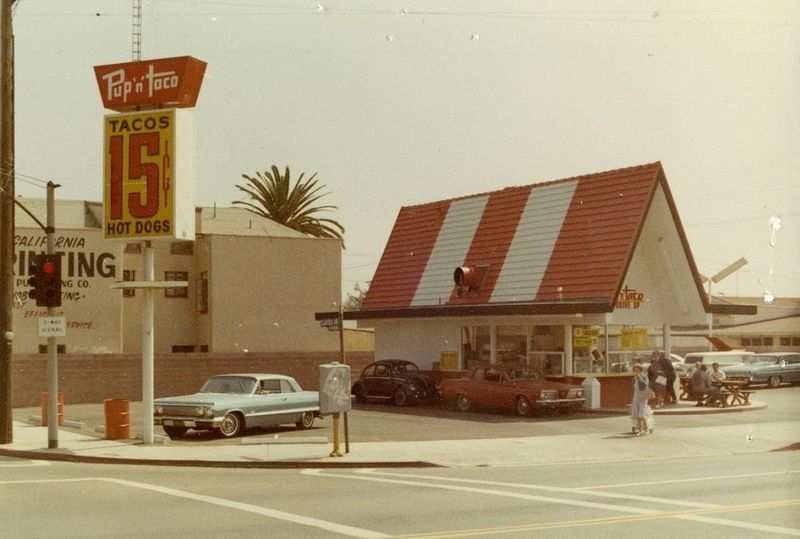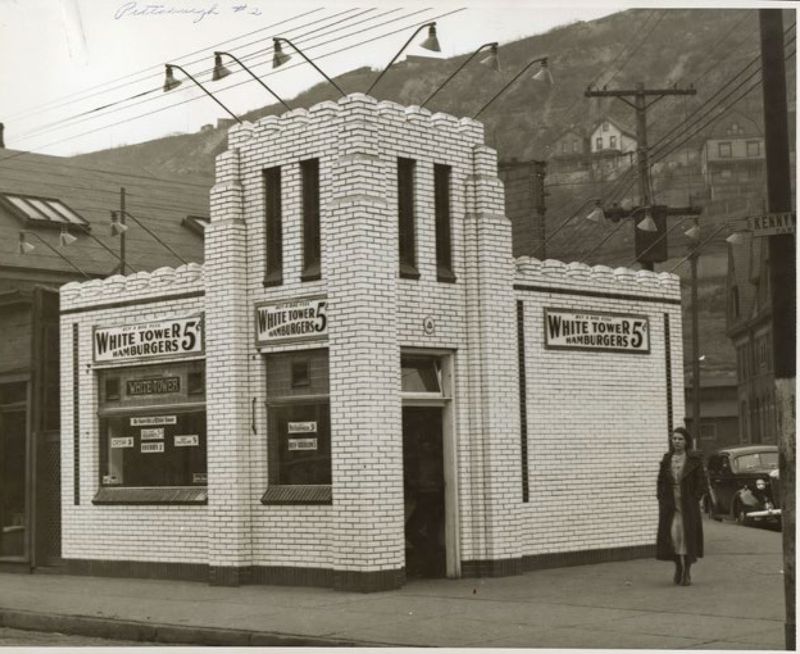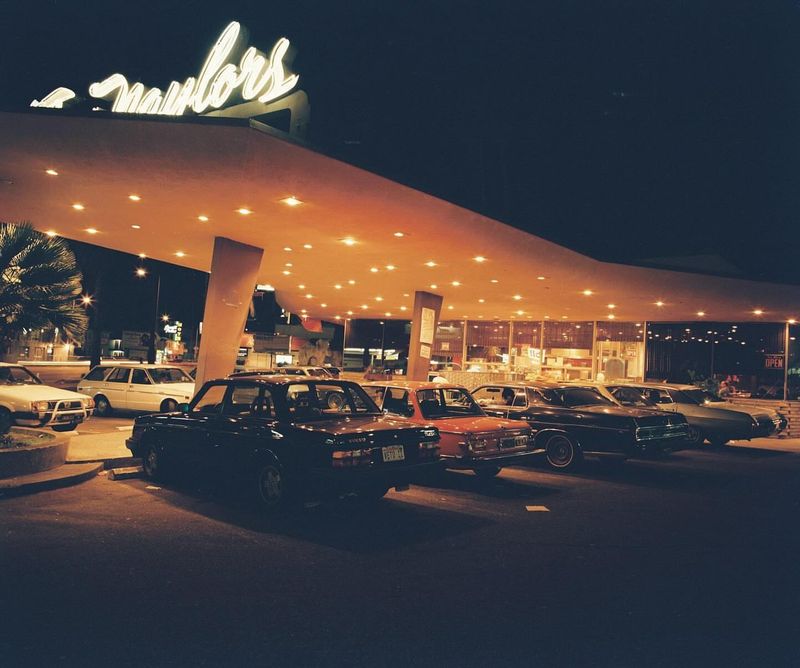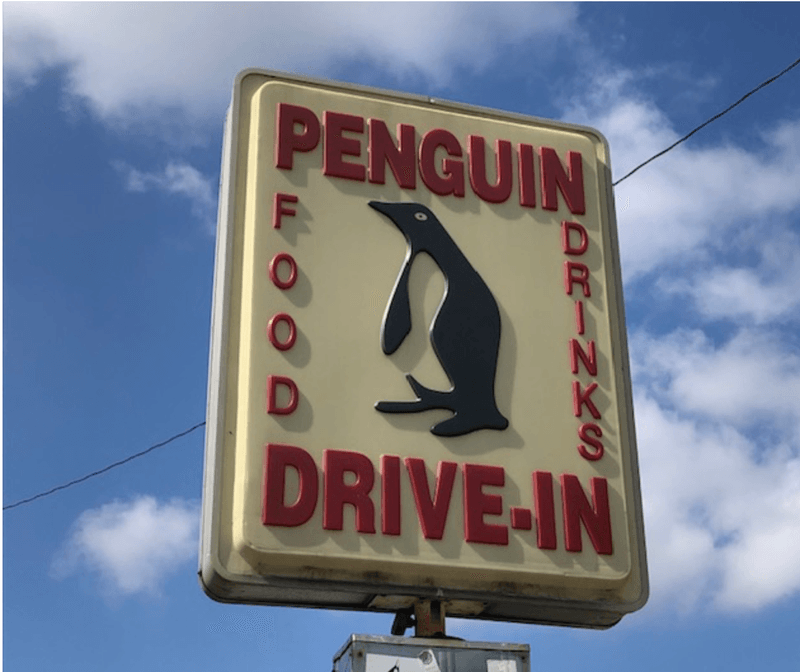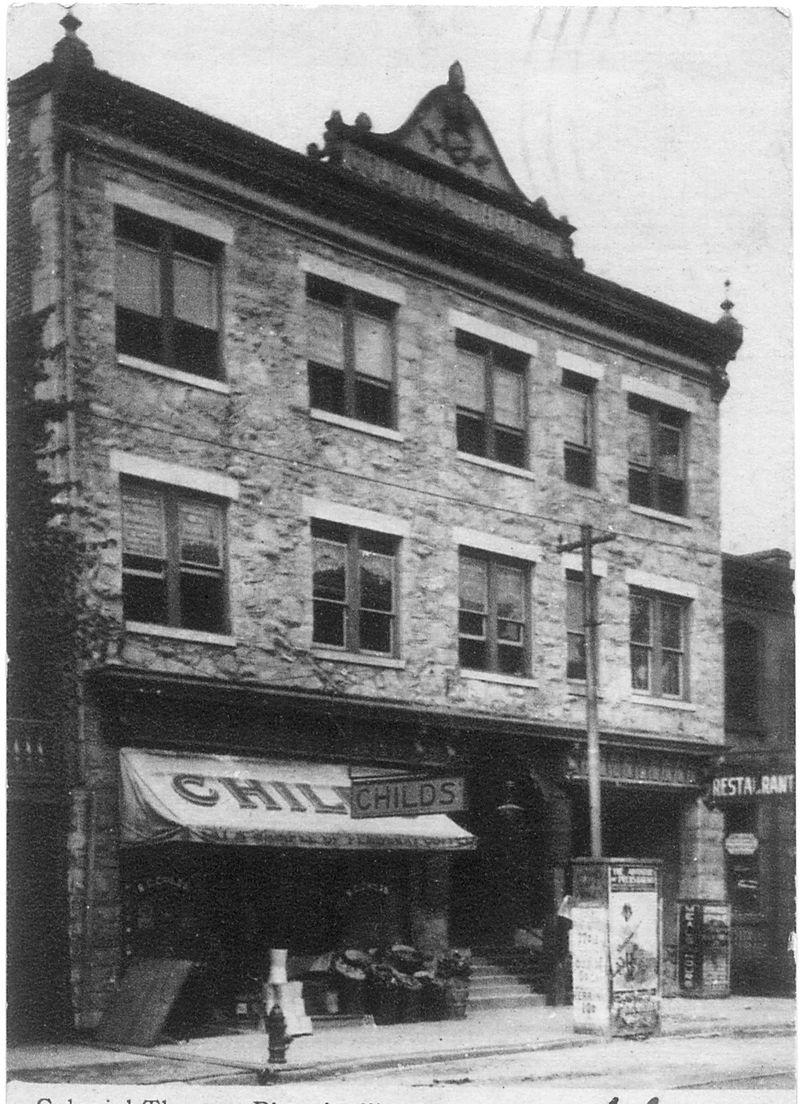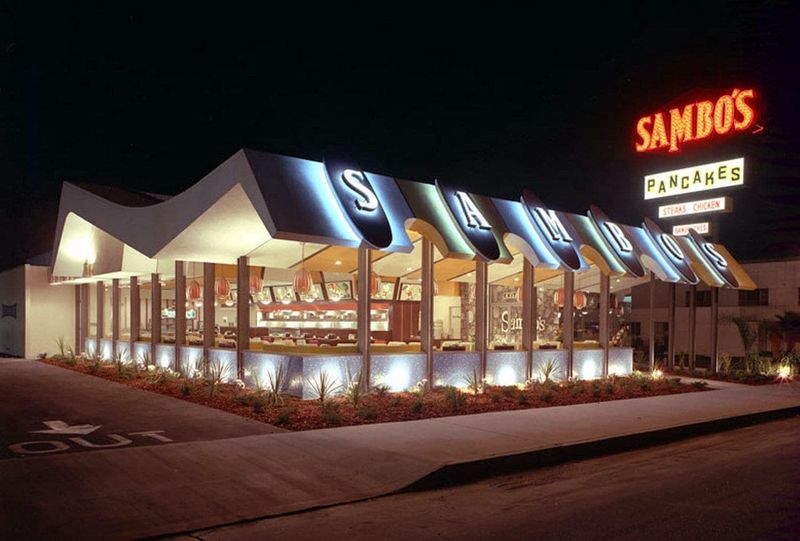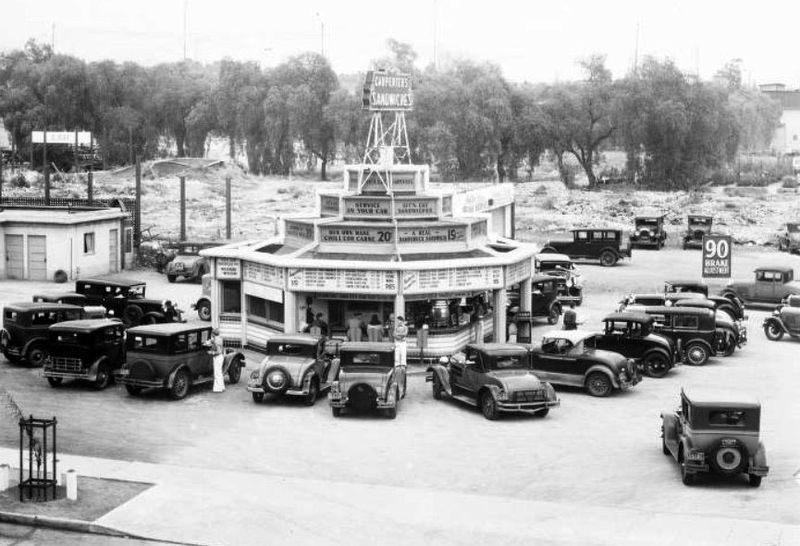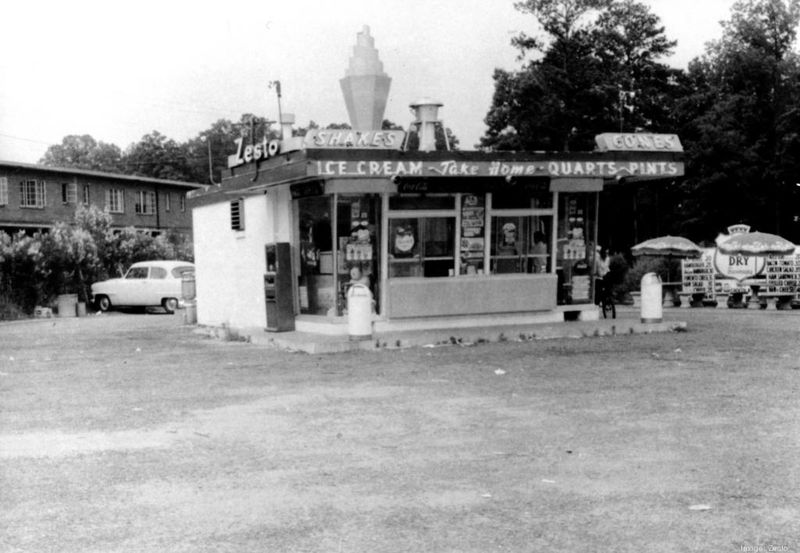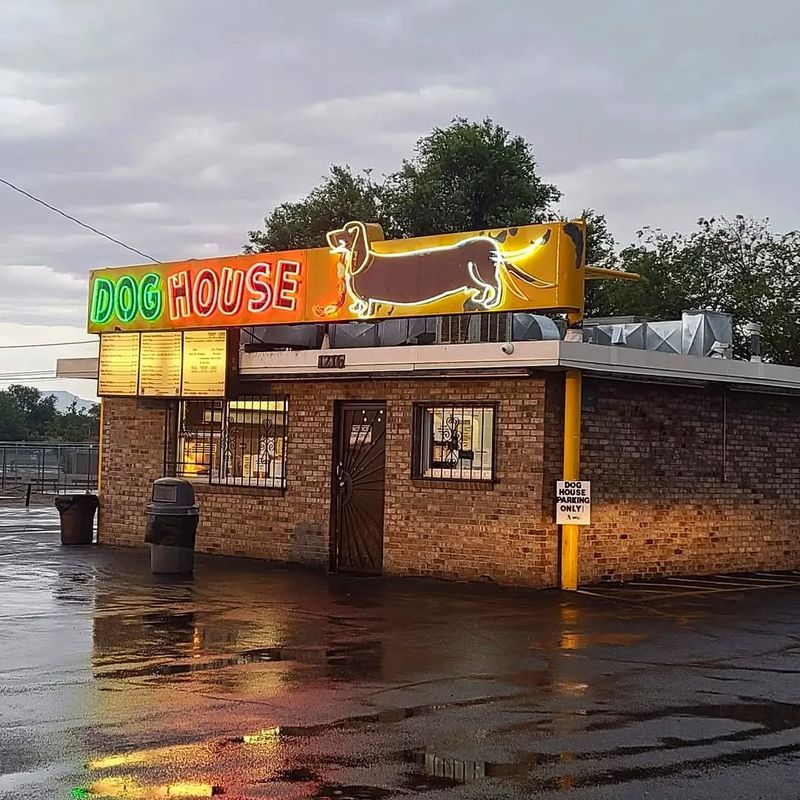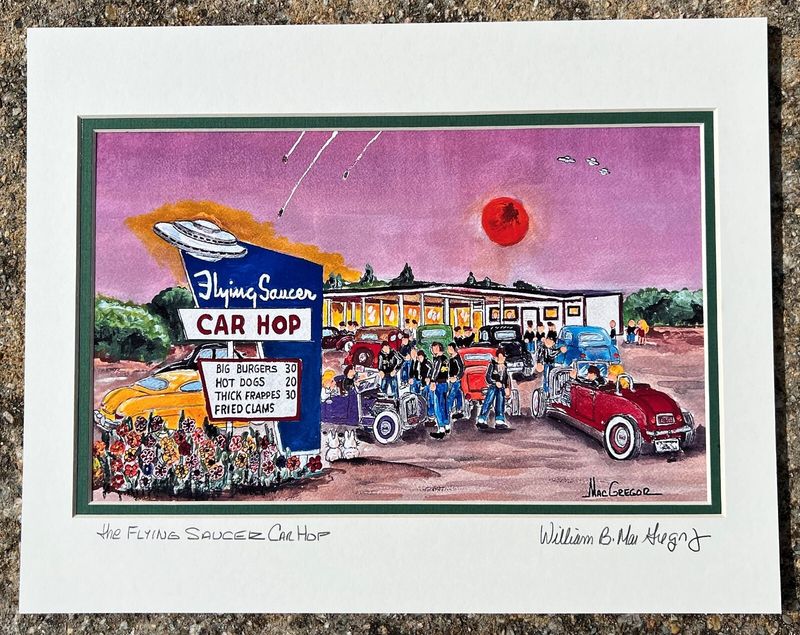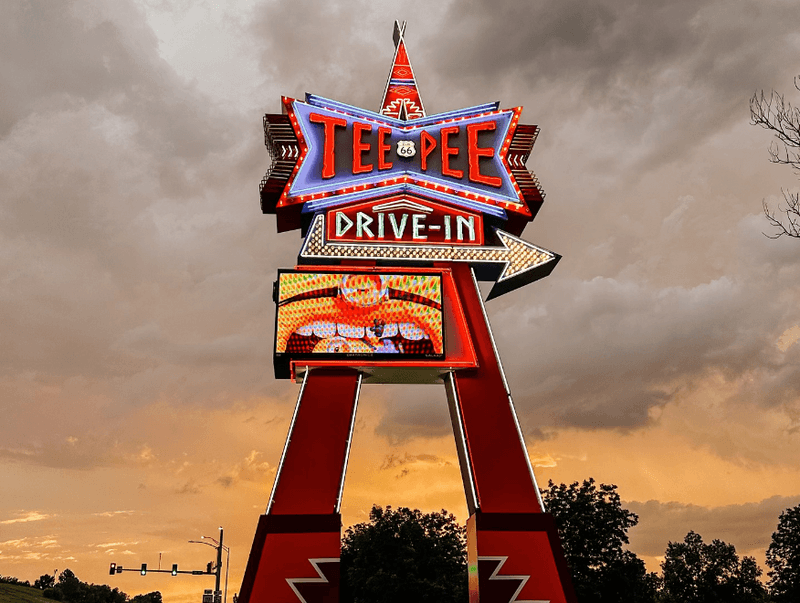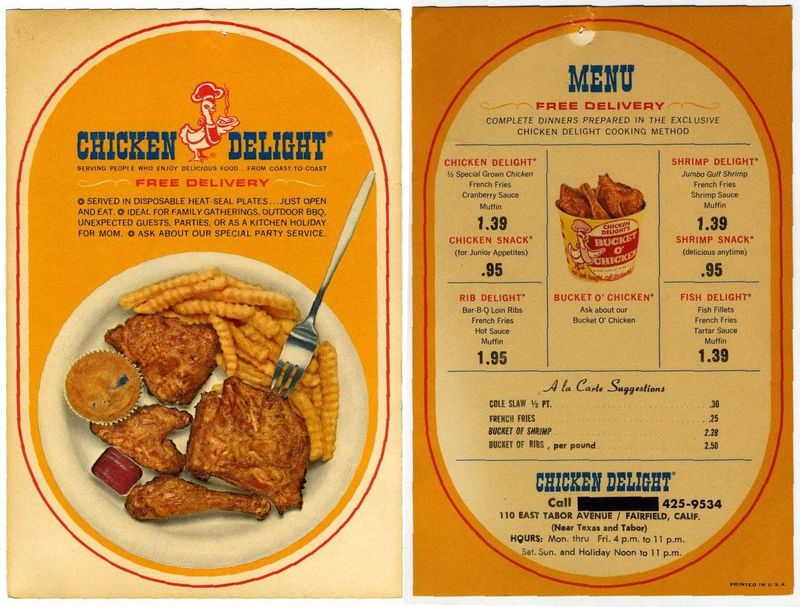Remember when neon signs flickered above chrome-plated diners and carhops delivered burgers on roller skates? The 1970s marked the final golden era for many of America’s most beloved roadside eateries. These greasy spoons weathered changing tastes, economic downturns, and the rise of fast-food chains, only to eventually close their doors forever. Join us for a mouthwatering trip down memory lane as we revisit these once-thriving establishments that defined American food culture.
1. The Original Tick Tock Diner (Clifton, NJ)
“Eat heavy!” proclaimed the famous slogan of this Route 3 landmark where time seemed to stand still. Chrome fixtures gleamed under fluorescent lights while the massive neon clock—the diner’s namesake—kept watch over hungry travelers day and night. During the disco era, this 24-hour greasy spoon became the late-night refuge for clubgoers seeking sustenance after dancing the night away. The jukebox blared everything from Donna Summer to Bruce Springsteen while waitresses balanced towering plates of disco fries—gravy and cheese-smothered delights that became a New Jersey institution. Though a newer Tick Tock operates nearby today, the original location with its authentic 1970s atmosphere closed when highway expansion claimed its prime roadside spot.
2. Pup ‘N’ Taco (California)
Orange and brown dominated the quirky color scheme of this California fast-food hybrid that dared to serve hot dogs and tacos under one roof. Founded in 1956, the chain expanded to over 100 locations during its 1970s heyday, becoming a fixture in Southern California’s competitive fast-food landscape. Teenagers flocked to Pup ‘N’ Taco after school, drawn by affordable prices—tacos for just 24 cents and slushes in wild flavors like blue raspberry and watermelon. The restaurant’s playful mascot—a cartoon dog wearing a sombrero—adorned cups, wrappers, and the iconic roadside signs. When Taco Bell purchased 99 locations in 1984, the Pup ‘N’ Taco era effectively ended, though devoted fans still hunt down vintage memorabilia from this uniquely Californian culinary experiment.
3. White Tower Hamburgers (Nationwide)
Gleaming white castles of porcelain steel once dotted American cities, beckoning hungry patrons with five-cent hamburgers and round-the-clock service. White Tower’s distinctive architecture—white-enameled buildings with miniature castle-like battlements—made them impossible to miss among urban landscapes. By the 1970s, most of the chain’s 230 locations were struggling against the rising tide of drive-thru convenience. Still, loyal customers continued sliding onto chrome stools at formica counters, ordering signature sliders and bottomless coffee from waitresses in crisp uniforms. The last original White Tower closed in Toledo in 2004, but architectural preservationists have saved several buildings. One former White Tower in Milwaukee found new life as a Vietnamese restaurant, its castle facade a curious reminder of America’s early fast-food royalty.
4. Tiny Naylor’s Drive-In (Los Angeles, CA)
Neon lights and space-age angles defined this Southern California landmark where celebrities rubbed elbows with hot-rodders. The signature boomerang roof and glass walls embodied the futuristic Googie architecture that captivated Americans during the post-war boom. Founder Tiny Naylor (who ironically stood 6’4″) built his flagship location at Sunset and La Brea in 1949, but the 1970s brought the restaurant’s most vibrant era. Teenagers cruised the parking lot while families enjoyed thick milkshakes and juicy burgers inside. The restaurant finally surrendered to changing tastes and real estate pressures in 1984, though devoted fans still share memories of those magical nights under the starlit Los Angeles sky.
5. The Penguin Drive-In (Charlotte, NC)
Rockabilly music spilled from the jukebox at this Charlotte institution where leather-jacketed greasers and poodle-skirted girls gathered around cherry-red booths. The Penguin’s black and white color scheme matched its namesake, while neon lights cast a blue glow across the parking lot filled with muscle cars. Famous for its deep-fried pickles and pimento cheese burgers, The Penguin became the unofficial clubhouse for local bands during the 1970s. Weekend nights found the small dining room packed with hungry music lovers fueling up before shows at the nearby Milestone Club. Though the original Penguin closed in the late 1970s, the location reopened under new ownership in the 2000s. A bitter dispute between the building’s owners and operators ultimately led to its final closure in 2014, ending a colorful chapter in Charlotte’s culinary history.
6. The Colonial Drive-In (Poughkeepsie, NY)
Summer nights under the stars meant only one thing in 1970s Poughkeepsie—double features at the Colonial Drive-In. Metal speaker boxes hung from car windows while families spread blankets on station wagon roofs, all eyes fixed on the massive outdoor screen. The Colonial wasn’t just about movies. Its bustling concession stand served legendary chili dogs and fresh-popped popcorn drowning in real butter. Teenagers working summer jobs hustled between cars, delivering trays of food to honking customers too comfortable to leave their vehicles. As multiplexes with cutting-edge sound systems lured audiences indoors, the Colonial’s attendance dwindled. When the projector showed its final film in 1979, locals mourned not just a theater but a community gathering place where generations had shared summer memories under Hudson Valley skies.
7. Sambo’s Restaurant Chain (Nationwide)
Orange booths and pancake stacks defined this once-ubiquitous chain that expanded from a single Santa Barbara location to over 1,100 restaurants nationwide. Founders Sam Battistone and Newell Bohnett combined their names to create “Sambo’s”—unaware of the controversy that would eventually contribute to the company’s downfall. During the 1970s, Sambo’s restaurants became fixtures along American highways. Families stopped for affordable all-day breakfast and comfort food served in dining rooms decorated with storybook imagery. The chain’s rapid expansion represented the quintessential American success story. Growing criticism over the name’s racial connotations coincided with financial troubles from overexpansion. By decade’s end, Sambo’s began closing locations, eventually filing for bankruptcy in 1981. Today, only the original Santa Barbara restaurant remains, now operating under a different name.
8. The Blue Onion Drive-In (Detroit, MI)
Motor City’s romance with the automobile found perfect expression at this beloved drive-in where carhops on roller skates delivered trays of food to waiting vehicles. The restaurant’s blue onion-shaped dome glowed neon-bright against Detroit’s industrial skyline, a beacon for hungry factory workers ending late shifts. Locals raved about the signature onion rings—thick-cut, double-battered, and fried to golden perfection. These crispy delights paired perfectly with the house specialty: a quarter-pound “Blue Burger” topped with melted blue cheese and caramelized onions. As Detroit’s auto industry faltered in the mid-1970s, so did the restaurants that served its workers. The Blue Onion’s lights dimmed permanently in 1977, though former customers still debate the secret ingredients in that famous onion ring batter at Detroit nostalgia forums online.
9. Zesto Drive-In (Atlanta, GA)
Rainbow-colored sprinkles topped soft-serve cones at this Atlanta institution where families gathered after Little League games and high school football victories. Founded as an ice cream stand in the 1940s, Zesto expanded its menu in the 1970s to include charbroiled burgers and crispy fried chicken. The Livaditis family operated multiple locations throughout the city, each featuring the signature blue-and-white color scheme and walk-up windows where customers placed orders. On sweltering Georgia summer days, lines stretched around the building for Zesto’s famous “Nut Brown Crown”—a towering chocolate-dipped cone rolled in chopped peanuts. While a few independently-owned Zestos survive today, most of the original 1970s locations closed as shopping malls replaced neighborhood commercial districts. The Little Five Points location, a particular favorite among Atlanta’s counterculture youth, shuttered in 1979.
10. The Dog House (Albuquerque, NM)
“Relish the moment” was the unofficial motto at this Route 66 landmark where the massive neon dachshund sign wagged its tail above hungry travelers. Located at the intersection of Central Avenue and Yale Boulevard, The Dog House served as both tourist attraction and local hangout during Albuquerque’s 1970s boom years. The restaurant’s claim to fame? Foot-long chili dogs smothered in New Mexico’s signature red chile sauce—a fiery concoction that had customers reaching for extra napkins and cold drinks. The narrow dining room featured just 12 stools along a counter where short-order cooks worked their magic on a well-seasoned grill. Though the original location closed when the property was redeveloped in the early 1980s, The Dog House achieved immortality when it appeared in several episodes of the TV series “Breaking Bad” decades later.
11. B-K Root Beer Stands (Midwest)
Frosty mugs of homemade root beer defined these roadside stands where teenage carhops delivered trays of food to waiting automobiles throughout America’s heartland. Unlike corporate competitors, each B-K (which stood for “Bergerson-Kenefick,” the founders’ surnames) maintained its independent character while sharing the distinctive orange-and-brown color scheme. During the 1970s, B-K stands served as social hubs in small Midwestern towns. Friday nights found high school students cruising between the local B-K and the town square, while families gathered after church for Sunday lunch specials. As interstate highways diverted traffic from the main streets where most B-Ks operated, these beloved institutions began disappearing. By decade’s end, corporate chains like A&W had absorbed many locations, while others simply closed their doors, leaving only faded signs and fond memories behind.
12. Frost Top Drive-In (Southern U.S.)
Giant fiberglass root beer mugs topped these beloved roadside stands where Southern hospitality came served with a side of onion rings. The signature frosted mug—kept in special freezers until serving time—created a layer of ice crystals on the restaurant’s house-made root beer, a sweet treat during humid Southern summers. Throughout the 1970s, Frost Top locations dotted highways across Louisiana, Mississippi, and Alabama. Each stand operated independently while maintaining the iconic branding that made them recognizable to travelers. As national chains expanded aggressively into Southern markets, many Frost Top owners couldn’t compete with corporate advertising budgets and streamlined operations. The oil bust of the late 1970s delivered the final blow to numerous locations, though a handful of independently-owned Frost Tops continue operating today as time capsules of a simpler era.
13. The Flying Saucer Drive-In (Pittsburgh, PA)
Architectural whimsy reached new heights at this space-age eatery where the circular dining room perched atop a narrow central column like a UFO hovering above Earth. Built during the 1950s Space Race, The Flying Saucer enjoyed renewed popularity during the 1970s Star Wars craze when science fiction captured America’s imagination. Inside, the restaurant’s cosmic theme continued with constellation-patterned upholstery and menu items sporting names like “Meteorite Burgers” and “Martian Malts.” The wraparound windows offered panoramic views of Pittsburgh’s industrial valley below, creating a dining experience unlike any other in the Steel City. When the property owner announced redevelopment plans in 1978, public outcry couldn’t save the beloved landmark. Demolition crews dismantled the saucer section piece by piece, ending a quirky chapter in roadside Americana.
14. The Tee Pee Drive-In (Tulsa, OK)
Route 66 travelers couldn’t miss this roadside attraction where the dining room sat inside a massive concrete teepee, complete with painted designs inspired by Plains Indian artwork. Standing over 40 feet tall, the structure became one of Oklahoma’s most photographed landmarks during the Mother Road’s final heyday. Throughout the 1970s, the restaurant served as both tourist stop and local gathering place. Families devoured “Indian Tacos” on fry bread while admiring the collection of Native American artifacts displayed in glass cases around the circular dining room. Highway realignment proved fatal for this beloved institution when Interstate 44 diverted traffic away from the restaurant’s location. Though preservationists fought to save the distinctive building, it was demolished in 1979, living on only in Route 66 guidebooks and fading Kodachrome slides.
15. Chicken Delight (Various U.S. Cities)
“Don’t cook tonight—call Chicken Delight!” This catchy jingle persuaded countless families to pick up the phone during the 1970s when home delivery remained a novelty. Drivers in distinctive red-and-white uniforms delivered hot meals in special insulated containers, revolutionizing how Americans enjoyed dinner at home. The chain’s unique selling proposition combined fried chicken and pizza under one roof—an unusual pairing that somehow worked. Store interiors featured kitschy chicken-themed decor, including the mascot: a cartoon chicken wearing a chef’s hat while carrying a steaming pizza box. A bitter legal battle between franchisees and corporate headquarters led to the chain’s rapid decline. By 1979, most U.S. locations had closed or rebranded, though the company continues operating in Canada today—a poultry phoenix rising from the ashes of franchise litigation.


